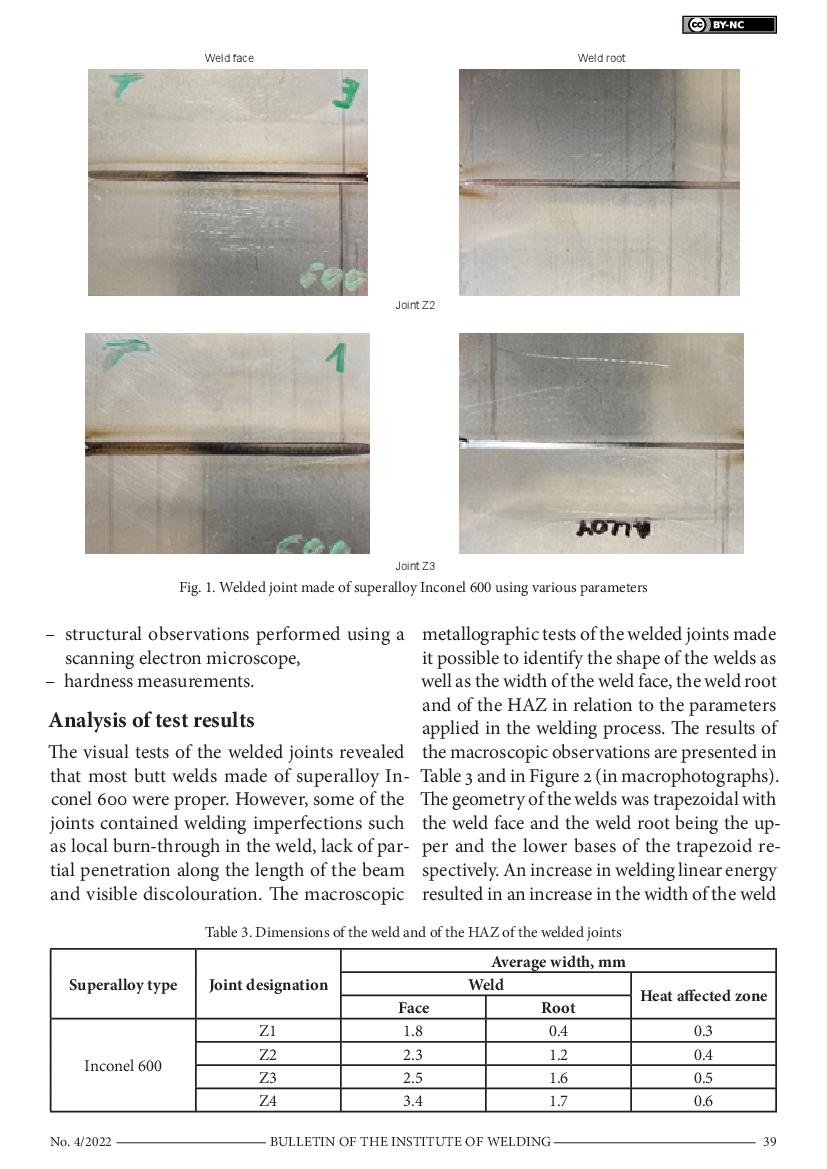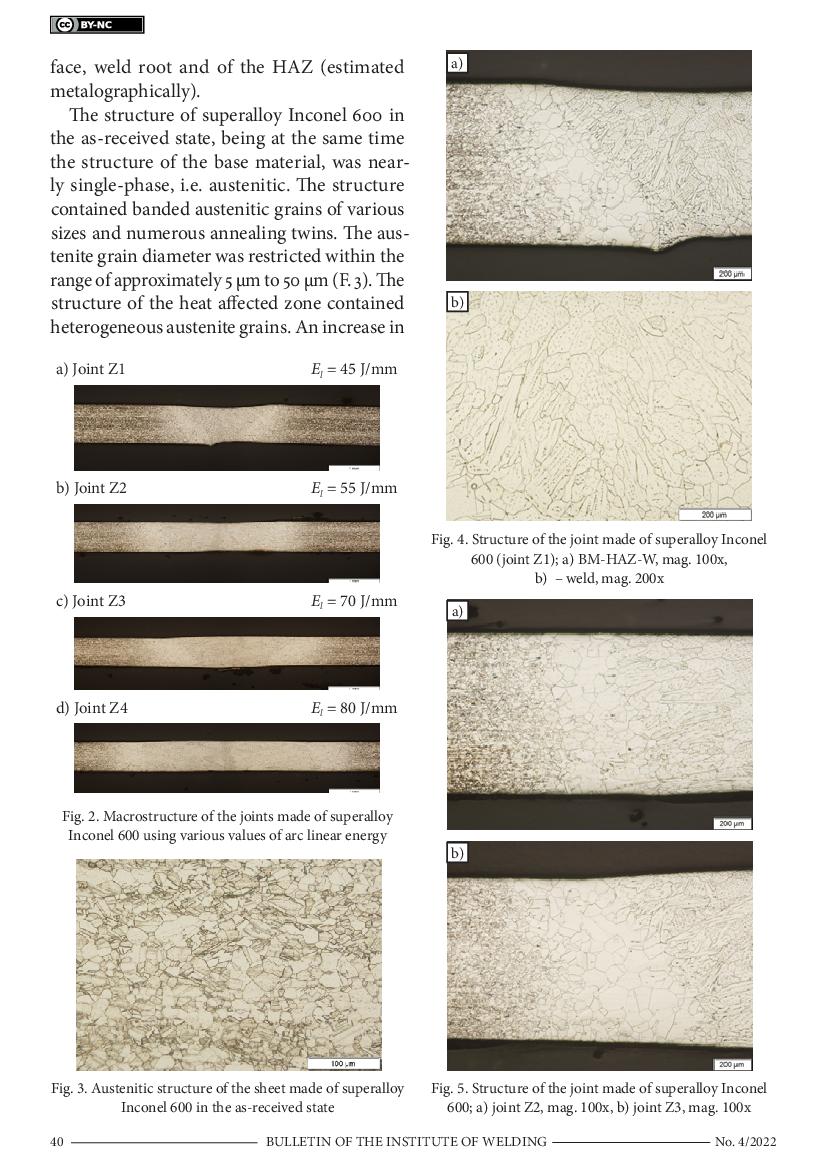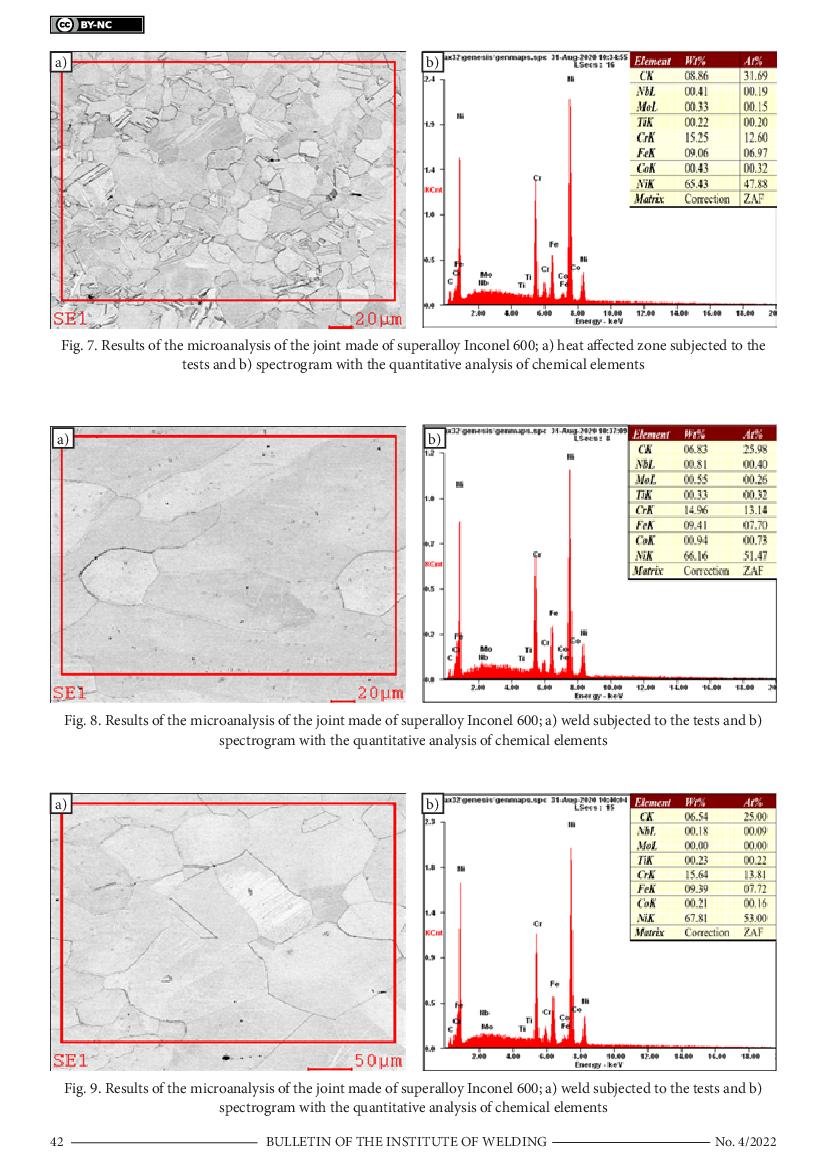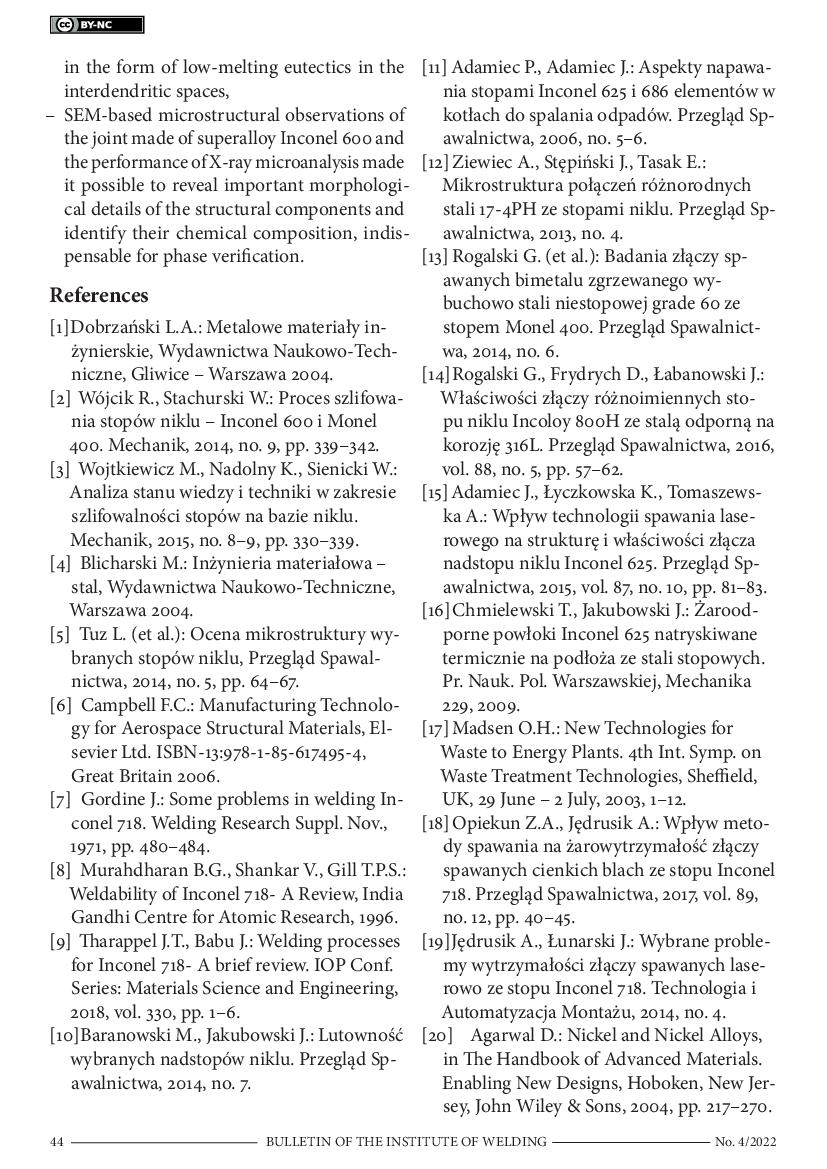The Analysis of the Structure and the Hardness of TIG-welded Joints Made of Nickel Superalloy Inconel 600
The tests discussed in the article aimed to analyse the structure and hardness of the heat affected zone and that of the weld in thin butt joints (1.0 mm) made of nickel superalloy Inconel 600 using the TIG method and variable welding linear energy restricted within the range of 45 J/mm to 80 J/mm. The test joints were subjected to visual tests, macro and microscopic metallographic tests, scanning electron microscopy-based structural observations and hardness measurements. The tests concerned with the effect of parameters applied during the TIG welding of butt joints made of 1.0 mm thick sheets (Inconel 600) in laboratory conditions revealed that the most favourable quality of the sheets was obtained when welding arc linear energy was restricted within the range of approximately 45 J/mm to 80 J/mm. An increase in linear energy within the above-presented range led to an increase in the width of the weld and that of the HAZ (observed in the joints subjected to macroscopic metallographic tests). In addition, an increase in linear energy restricted within the aforesaid range increased the grain size in matrix γ (in the HAZ) from approximately 120 μm to approximately 200 μm. The structure of the weld contained the zone of columnar grains oriented towards the fusion line as well as large groups of primary grains having the dendritic structure with clearly visible axes of primary dendrites of varied orientation. In addition, the weld structure also contained precipitates in the form of low-melting eutectics located in interdendritic spaces. The X-ray microanalysis concerning fragments having an area of 0.045mm2, examined in the individual zones of the welded joints made of Inconel 600, revealed only slight differences in terms of mass and atomic concentrations of the primary chemical elements of the superalloy matrix such as nickel, chromium and iron or larger differences as regards carbide-forming elements such as niobium and titanium and the concentration of carbon itself.
doi: 10.17729/ebis.2022.4/4
 1 / 8
1 / 8
 2 & 3 / 8
2 & 3 / 8
 4 & 5 / 8
4 & 5 / 8
 6 & 7 / 8
6 & 7 / 8 8 / 8
8 / 8









